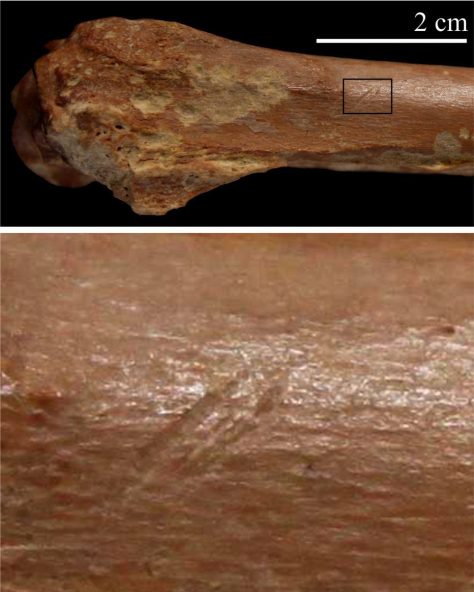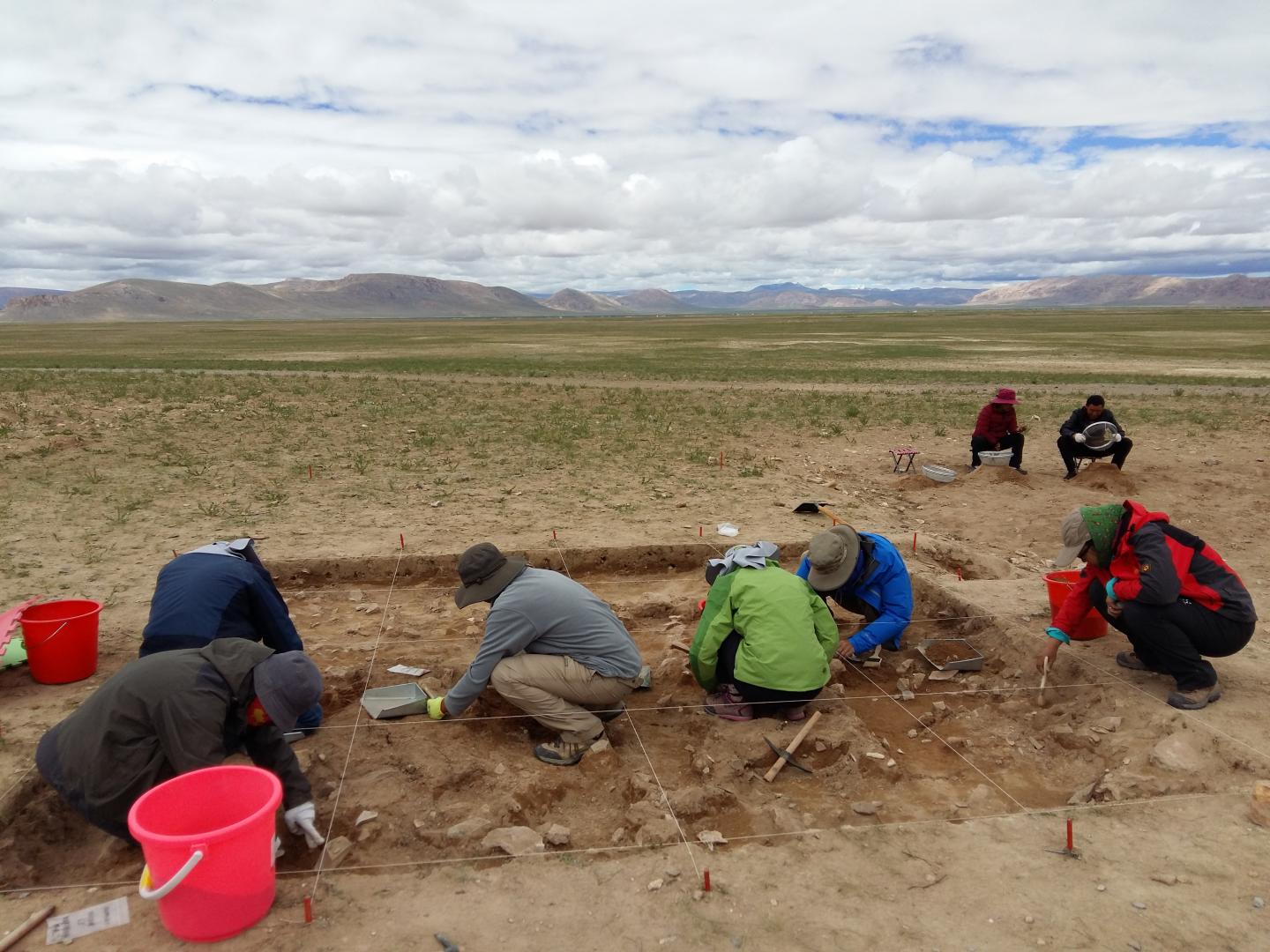via The Nation, 26 November 2018: Bangkok's newest shopping mall features a floating museum focusing on trade and commerce in 18th century Bangkok.
The post All aboard for history appeared first on SEAArch - Southeast Asian Archaeology.
via The Nation, 26 November 2018: Bangkok's newest shopping mall features a floating museum focusing on trade and commerce in 18th century Bangkok.
The post All aboard for history appeared first on SEAArch - Southeast Asian Archaeology.
via Antara News, 24 November 2018:
The post BPCB explores prehistoric rock art in Kisar appeared first on SEAArch - Southeast Asian Archaeology.
 BURGOS, SPAIN—Science News reports that stone tools unearthed in Algeria amid butchered animal bones suggest the evolution of human ancestors was not limited to East Africa. Mohamed Sahnouni of Spain’s National Research Center for Human Evolution and his colleagues say meat-chopping tools found in North Africa were made about 2.4 million years ago, or about 200,000 years more recently than the oldest known tools in East Africa. The scientists think the tools could have been crafted by descendants of East African toolmakers who migrated into North Africa, or they may have been created independently. The animal bones came from savanna-dwellers such as elephants, horses, rhinoceroses, antelopes, and crocodiles that may have been hunted or scavenged from carnovores’ fresh kill sites, Sahnouni said. No hominin remains were found with the tools, so the researchers are not sure who made them. To read about early remains of modern humans discovered in Morocco, go to “Homo sapiens, Earlier Still.”
BURGOS, SPAIN—Science News reports that stone tools unearthed in Algeria amid butchered animal bones suggest the evolution of human ancestors was not limited to East Africa. Mohamed Sahnouni of Spain’s National Research Center for Human Evolution and his colleagues say meat-chopping tools found in North Africa were made about 2.4 million years ago, or about 200,000 years more recently than the oldest known tools in East Africa. The scientists think the tools could have been crafted by descendants of East African toolmakers who migrated into North Africa, or they may have been created independently. The animal bones came from savanna-dwellers such as elephants, horses, rhinoceroses, antelopes, and crocodiles that may have been hunted or scavenged from carnovores’ fresh kill sites, Sahnouni said. No hominin remains were found with the tools, so the researchers are not sure who made them. To read about early remains of modern humans discovered in Morocco, go to “Homo sapiens, Earlier Still.”
 BEIJING, CHINA—Cosmos Magazine reports that a team of researchers led by Xiaoling Zhang of the Chinese Academy of Sciences has unearthed a 30,000-year-old stone tool workshop in central Tibet—some 15,000 feet above sea level. Evidence from the site, known as Nwya Devu, suggests humans were able to survive at the area's extremely high altitude at least 15,000 years earlier than previously thought. The researchers suspect the toolmakers were hunters who followed herds of gazelles, horses, yaks, and maybe even woolly rhinoceroses to the Tibetan Plateau, and speculate that Denisovan genetic material may have contributed to their ability to adapt to the harsh environment. The types of tool technologies at the site also point to interactions between early Tibetans and people living in Siberia and Mongolia. To read in-depth about research into people's ability to live at high altitude, go to “The Heights We Go To.”
BEIJING, CHINA—Cosmos Magazine reports that a team of researchers led by Xiaoling Zhang of the Chinese Academy of Sciences has unearthed a 30,000-year-old stone tool workshop in central Tibet—some 15,000 feet above sea level. Evidence from the site, known as Nwya Devu, suggests humans were able to survive at the area's extremely high altitude at least 15,000 years earlier than previously thought. The researchers suspect the toolmakers were hunters who followed herds of gazelles, horses, yaks, and maybe even woolly rhinoceroses to the Tibetan Plateau, and speculate that Denisovan genetic material may have contributed to their ability to adapt to the harsh environment. The types of tool technologies at the site also point to interactions between early Tibetans and people living in Siberia and Mongolia. To read in-depth about research into people's ability to live at high altitude, go to “The Heights We Go To.”
via Myanmar Times, 26 November 2018: The Southeast Asia Tobacco Control Alliance recognizes the Pindaya Buddhist Caves complex for its efforts in making it a smoke-free site.
The post Shan caves awarded as smoke-free heritage site appeared first on SEAArch - Southeast Asian Archaeology.
via Khmer Times, 29 November 2018: Cambodia's Lkhon Khol is listed in Unesco's Intangible Cultural Heritage List. Thailand also intends to list its version of the dance.
The post Unesco recognises Lkhon Khol appeared first on SEAArch - Southeast Asian Archaeology.
The tunic worn by members of the armed forces. Initially short-sleeved or even sleeveless and hemmed above the knee, later tunics (as well as early cavalry tunics) had long sleeves. It is shown on some monuments as being knotted on one shoulder. Tab. Vind. 196. [Sumner 2009]
"Fake art sits unnoticed in galleries around the world. A talented fraudster has been playing the art market and ripping off collectors for years. Who is the mystery conman? Discover more in THE MYSTERY CONMAN - THE MURKY BUSINESS OF COUNTERFEIT ANTIQUES. Museum curators and art collectors want to sweep the topic of counterfeiting under the carpet. But archaeologist Stefan Lehmann is on the hunt for the elusive figure whose counterfeit antiques are in some of the world's biggest collections. Around 40 fakes have been discovered and Lehmann believes this is just the tip of the iceberg. Alongside antique dealer Christoph Leon, Lehmann follows the forgery trail through Europe and to the US."
1. A tower on a fortification (Caes., BG 5.40.2; CIL III, 11965); 2. a moveable wooden tower used in siege warfare (Veg., DRM 4.17; Livy 32.17.16–17); 3. a battlefield formation (Fest. s.v.; Aul. Gell. 10.9.1.). [Johnson 1983]
via Straits Times, 27 November 2018: New galleries in the Asian Civilisations Museum in Singapore.
The post Asian Civilisations Museum to open 3 new galleries for Christian Art, Islamic Art, and Ancestors and Rituals appeared first on SEAArch - Southeast Asian Archaeology.
via South China Morning Post, 27 November 2018: A new book Studying Singapore before 1800 explores a less-known area of Singapore's past.
The post Singapore before colonisation: from Temasek to Singapura, destruction, and flight to Melaka and Johor appeared first on SEAArch - Southeast Asian Archaeology.
via Manila Bulletin, 24 November 2018: The National Museum declares the Manila Post Office building, built in 1926, as an ‘important cultural property’.
The post National Museum declares Manila’s post office building ‘important cultural property’ appeared first on SEAArch - Southeast Asian Archaeology.
One positive outcome from the recent flurry of museum repatriation stories is that they might encourage people to think more critically about how our universal museums evolved and to question their sustainability in a rapidly changing world.